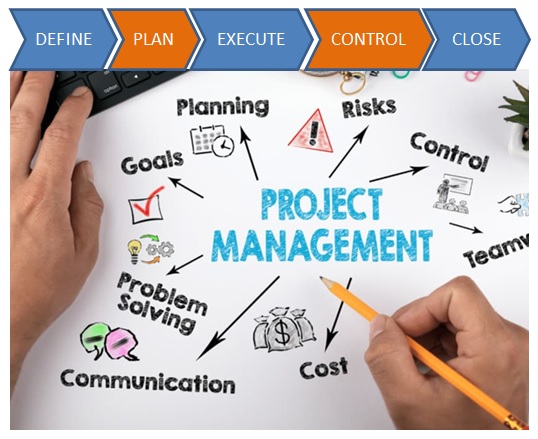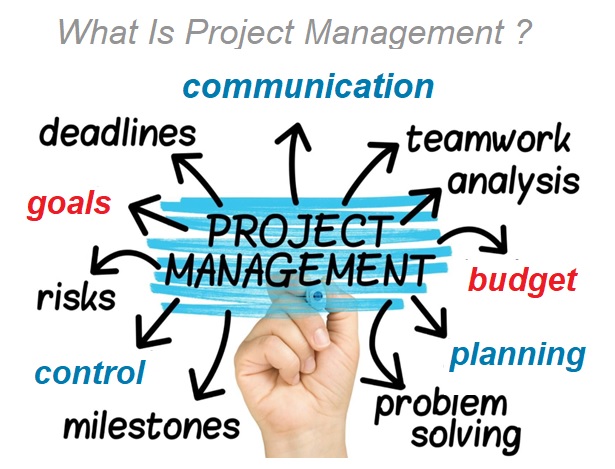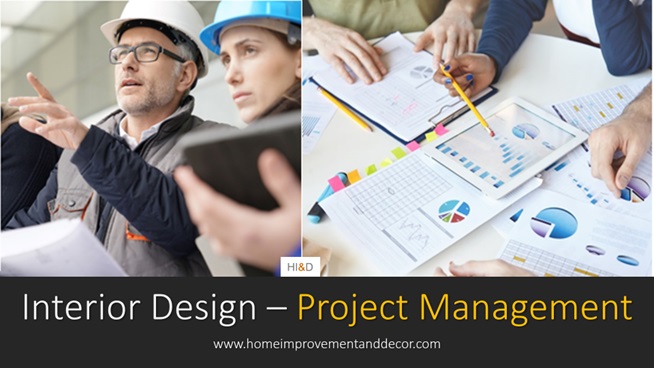
Interior Project Management
Basics Of Project Management For Interior Design Professionals
Interior project management is a crucial step in the planning and execution of projects related to interior work. Irrespective of the size and scale of the project, project management plays an important role in achieving the project completion within the budgeted resources, project cost, and scheduled duration.
The successful execution of interior design projects needs elaborate planning and execution skills. The project planning process takes into account the available resources, project design specifications and requirements, the project budget, and the project duration.

The interior design company usually enters into a legal agreement with the client to execute the project as per the design and specifications within the stipulated budget and duration. It is crucial for the interior design company to deliver the project as per the contractual obligations in terms of project execution within the budgeted cost and schedule.
Lack of project management skills can lead to cost overruns, project deviations, client dissatisfaction, and litigation. And therefore, project management skills are an important professional skill set for interior designers, architects, civil engineers, and other stakeholders.
Basics Of Interior Project Management
What Is Project Management ?
Interior project management is a crucial step in the planning and execution of projects related to interior work. Irrespective of the size and scale of the project, project management plays an important role in achieving the project completion within the budgeted resources, project cost, and scheduled duration.
The successful execution of interior design projects needs elaborate planning and execution skills. The project planning process takes into account the available resources, project design specifications and requirements, the project budget, and the project duration.

Project management is used in a wide range of industries, including interior design, construction, engineering, software development, healthcare, and marketing. The principles of project management can be applied to projects of any size or complexity, from small, one-person projects to large-scale, multi-year initiatives involving hundreds of stakeholders.
Basics Of Interior Project Management
Objectives Of Project Management
The main objective of project management is the successful execution and completion of projects within allocated resources, financial budgets, and project completion deadlines. The objectives of project management are to effectively plan, organize, execute, and monitor projects to achieve specific goals within a set timeframe and budget.
The broad objectives include:

- Defining project goals and objectives: This involves identifying the purpose of the project and the desired outcome.
- Planning the project: This involves determining the scope, timeline, budget, and resources required for the project.
- Organizing and mobilizing resources: This involves identifying the resources required to complete the project and acquiring them in a timely manner.
- Leading and motivating project team members: This involves managing the people involved in the project, ensuring that they are working together effectively, and providing them with the resources they need to succeed.
- Monitoring project progress: This involves tracking the project’s progress against its goals and objectives, identifying any issues or challenges that arise, and making adjustments as needed.
- Communicating with stakeholders: This involves keeping stakeholders informed about the project’s progress, addressing their concerns, and ensuring that they are satisfied with the project’s outcomes.
- Closing the project: This involves bringing the project to a successful conclusion, ensuring that all deliverables have been completed, and transitioning the project’s outcomes to the appropriate stakeholders.
Objectives Of Interior Project Management
The project management objectives for the interior design project can be summarized as follows:
- To understand and map the client’s requirements.
- To prepare the interior design plan and other designs.
- To seek client approval for the project design, budget, and specifications.
- To plan the resources necessary to execute the project.
- To execute the project as per the approved design and budgets.
- To effectively manage and control the project activities.
- To deliver the completed project as per the plan and budget.
- To ensure client and other stakeholder satisfaction.

Basics Of Interior Project Management
Project Management Tools And Methods For Interior Design Projects
There are a variety of project management tools that can be used by civil engineers, architects, and interior designers to help manage their projects. Here are a few popular options:
- AutoCAD: AutoCAD is a computer-aided design (CAD) software that is commonly used by architects and interior designers to create 2D and 3D designs. It can also be used to create construction documents and blueprints.
- Revit: Revit is a building information modeling (BIM) software that is used by architects and engineers to design and document building projects. It can be used to create detailed 3D models of buildings, including structural, mechanical, and electrical systems.
- SketchUp: SketchUp is a 3D modeling software that is commonly used by architects and interior designers to create 3D models of buildings and interior spaces. It can be used for everything from concept design to construction documentation.
- Trello: Trello is a project management tool that can be used by civil engineers, architects, and interior designers to track project progress, assign tasks, and collaborate with team members.
- Asana: Asana is another project management tool that is popular among architects and interior designers. It can be used to track project progress, assign tasks, and communicate with team members.
- Procore: Procore is a cloud-based construction project management software that can be used by civil engineers, architects, and contractors to manage construction projects from start to finish.
- Bluebeam: Bluebeam is a software that is used by architects, engineers, and contractors to create and share digital construction documents. It can be used for everything from creating plans and specifications to conducting design reviews and quality inspections.
Basics Of Interior Project Management
Project Management Methods
Project management is an essential aspect of civil engineering projects. Effective project management ensures that projects are completed on time, within budget, and to the required quality standards. There are several project management methods that civil engineers can use to manage their projects effectively.
Civil engineers can choose the project management method that best suits their project’s requirements, scope, and objectives. It is crucial to establish clear project goals, define project scope, identify project risks, and involve all stakeholders in project planning and execution to ensure successful project delivery.
Here are some of them:
- Traditional Project Management (TPM): This method involves a linear, step-by-step approach to project management. It involves planning, design, construction, and project closeout phases, each with its specific tasks and deliverables.
- Agile Project Management: This method is flexible and iterative, and it focuses on delivering the project in smaller increments rather than all at once. Agile project management involves a team-based approach with collaboration and communication between team members, including owners, architects, engineers, and contractors.
- Lean Construction: Lean construction is a method of project management that focuses on eliminating waste and maximizing value. It emphasizes collaboration and communication among project team members, and it involves using just-in-time delivery and other lean manufacturing techniques to improve efficiency.
- Integrated Project Delivery (IPD): IPD is a collaborative approach to project management that involves all stakeholders working together to achieve common project goals. It involves early collaboration, risk-sharing, and shared responsibility for project outcomes.
- Critical Path Method (CPM): CPM is a project management technique that involves identifying the critical path of a project and focusing on completing those tasks on time to ensure that the project is completed on schedule.
- Program Evaluation and Review Technique (PERT): PERT is a project management technique that involves estimating the duration of each task in a project and analyzing the critical path to determine the project’s completion date.
- Gantt Charts : These charts are also referred as bar charts. Gantt charts is one of most simple and effective project management tool extensively used.
Basics Of Interior Project Management
Responsibilities Of Project Manager
Interior project management involves overseeing the design and implementation of interior projects, such as renovations or new construction of residential, commercial, or industrial spaces. It involves coordinating with various professionals involved in the project, such as architects, designers, contractors, and subcontractors, to ensure that the project is completed on time, within budget, and to the satisfaction of the client.
The key responsibilities of an interior project manager may include:

- Planning And Budgeting: The project manager must start by developing a comprehensive project plan that outlines the scope, schedule, and budget for the project. This involves gathering and analyzing information about the project requirements, identifying the resources needed to complete the project, and estimating costs for materials, labor, and other expenses. The project manager must also ensure that the project plan is feasible and realistic, taking into account any constraints or risks that may impact the project.
- Resource Management: Once the project plan has been developed, the project manager must assemble and manage a team of professionals to execute the project. This team may include architects, designers, contractors, and subcontractors, each with their own area of expertise. The project manager must ensure that each team member understands their role in the project, and that they are working effectively together to meet project objectives. The project manager must also be able to address any issues or conflicts that arise within the team.
- Communication: Communication is critical to the success of any project, and the project manager must maintain regular communication with the client and stakeholders throughout the project. This includes providing regular progress updates, addressing any concerns or issues that arise, and managing expectations regarding project timelines, costs, and deliverables. The project manager must also be able to communicate effectively with the project team, ensuring that everyone is working towards the same goals.
- Quality Control: The project manager is responsible for ensuring that the project meets the required quality standards and specifications. This involves conducting regular inspections of the work in progress, identifying any defects or problems that need to be addressed, and ensuring that corrective action is taken promptly. The project manager must also ensure that the project team is following all relevant codes, regulations, and safety standards.
- Risk Management: Any project involves risks, such as unexpected delays, cost overruns, or quality issues. The project manager must identify potential risks and develop contingency plans to mitigate them. This may involve identifying alternative suppliers or materials, developing backup plans for critical tasks, or reallocating resources as needed to keep the project on track.
- Documentation: Finally, the project manager must maintain accurate and up-to-date project documentation, including contracts, invoices, change orders, and other relevant paperwork. This documentation is critical for ensuring that the project is completed on time, within budget, and to the satisfaction of the client. The project manager must also be able to communicate effectively with the client and stakeholders using this documentation, providing regular updates on project progress and any changes that may impact the project.

